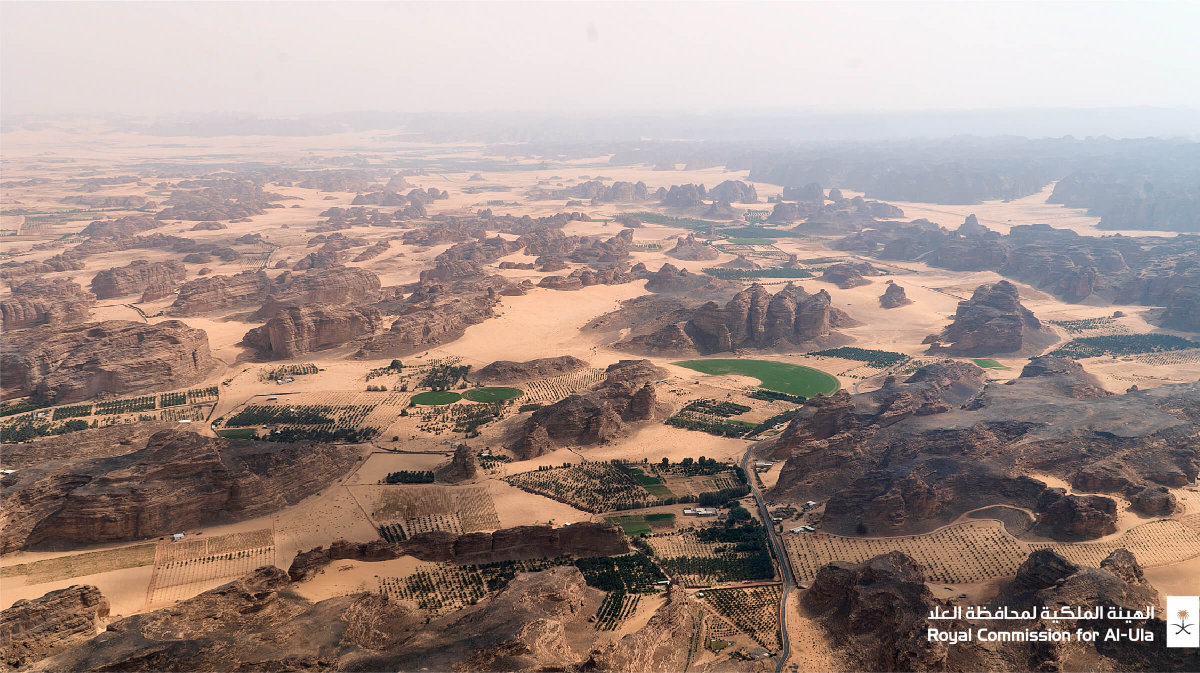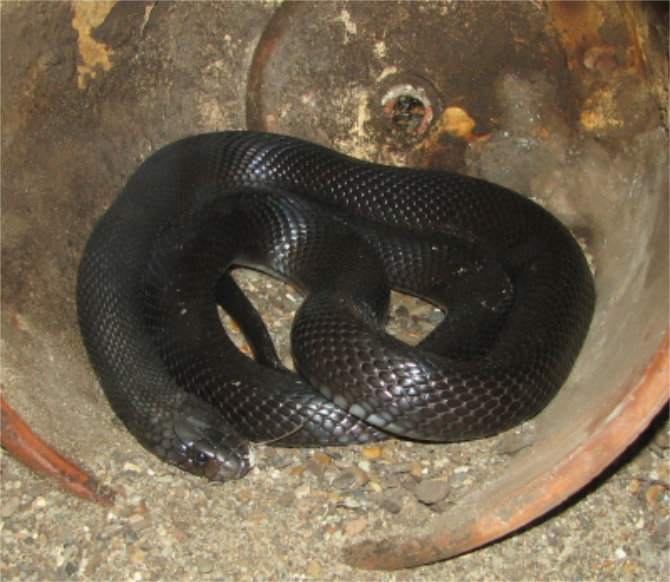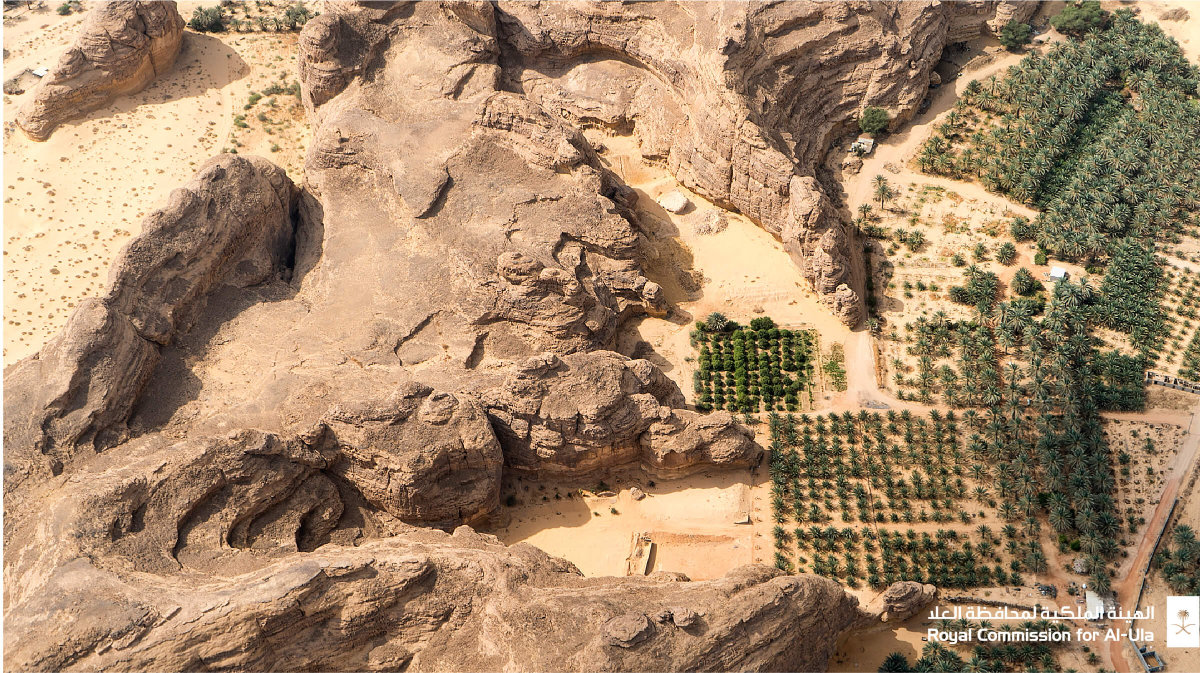How a Newly Reclassified Snake Species Was Discovered in Saudi Arabia's Ancient AlUla Oasis
DHAHRAN: Scientists working in the ancient AlUla oasis in northwestern Saudi Arabia were thrilled earlier this year when they discovered a new species of snake. With its striking red color and stylish black collar, the reptile is perfectly adapted to the sands and rocks of the Hejaz.
Laszló Patko, who works as head of applied research at the Royal Commission for AlUla and has been surveying the region’s biodiversity for the past two years, was part of the team that discovered this charming new non-venomous species.
“The Rhynchocalamus hejazicus is not only new to the region or country, but also new to science,” the Hungarian scholar told Arab News.

The institutions involved in the discovery include RCU, Ha'il University, King Abdullah University of Science and Technology, and the Prince Mohammed bin Salman Royal Reserve Development Authority.
These Saudi institutions are working with experts from Portugal's University of Porto, Egypt's Suez University, Yemen's University of Aden and Malaysia's Natural History Collective Ventures.
Patko, along with Saudi, Czech and Portuguese colleagues, compiled the results of the study into a paper, which within a few months was published in a prestigious international, peer-reviewed biological science journal. Animal systems and evolution–

Laszló Patko, Head of Applied Research at the Royal Commission of AlUla (RCU)
“It was very fast because it was a high-quality, comprehensive paper with a lot of scientific results,” Patko said. “It was accepted and published very quickly.”
“For me, that’s the real joy in seeing that this is not only an important discovery for us, but for the entire international scientific community.”
The published paper describes the new species as “a small, introverted snake with striking, dark coloration. This new species is found in the northwestern Hejaz region of the Kingdom of Saudi Arabia and fills the distributional gap that the genus has in most of the Arabian Peninsula.”
Stephen Brown, RCU’s vice president for wildlife and natural heritage, said the discovery of the new species underscores the importance of the kingdom’s conservation efforts.
“This discovery not only catalogues a new species, but also reflects our ongoing commitment to protecting AlUla’s rich and diverse ecosystem,” Brown said in a statement. “It is a symbol of our commitment to preserving this unique oasis.
This section contains relevant reference points placed in the (Comments) field.
An RCU spokesperson agreed that much more needs to be learned about desert animals’ adaptability.
“This discovery is of great significance to understanding the ecological dynamics of the region and the adaptive strategies of desert wildlife, further enhancing AlUla’s reputation as a place of conservation of both historical and natural treasures,” the spokesperson said in a statement.
The project leading to the snake discovery began with a wildlife survey across the region, which began in November 2022, with a focus on documenting the area’s biodiversity.

With its striking red color and stylish black collar, this reptile is perfectly adapted to the sands and rocks of the Hejaz. (RCU)
“We have never had such a rigorous scientific collection before,” Patko said. “Within the framework of this project, we found this new species by ‘accident’.
“It was by chance that we thoroughly surveyed the entire nature reserve and described all the species we found. We knew that some species were in the reserve, but did not know their exact numbers or locations.”
Scientists think the region could be home to new species. Lizards and snakes have been spotted in the area between 2017 and 2022, but have never been found and described in detail before. This expedition is a great opportunity to fill these gaps.
In 2023, the team devoted time in the desert to observing the animals through morphology, including studying their appearance, color, scale patterns, and DNA.
You doknow?
• Half of AlUla is occupied by six nature reserves, including the Sharaan Nature Reserve, which covers 1,500 square kilometres.
• The reserve is home to more than 1,580 animals from four species that have been successfully reintroduced into the region.
• AlUla aims to create a thriving and harmonious ecosystem through habitat restoration, reintroduction of indigenous species and sustainable practices.
“Of course there are occasional observations, but if you go out into the field, you have to work very hard,” Patko said.
“You wake up in the desert, you sleep in the desert, you work in the desert with 10-15 experts, and then all that hard work pays off. It’s a great way to show why fieldwork is important.”
Using online databases, the team expects to find species such as Walterinnesia aegyptia, also known as the desert cobra or desert black viper, which is native to nearby Khaybar and is well-camouflaged in the volcanic landscape.

The Walterinnesia aegyptia desert cobra, also known as the desert cobra or desert black viper, is native to nearby Khaybar. The reptile is well camouflaged in the volcanic landscape. (Wikimedia Commons)
“The Harrat Khaibar is mostly black and gray due to basalt and past volcanic activity,” Patko said. “The first one we found was a melanistic snake, which is a completely black snake.”
The newly discovered snake is bright red, having evolved to blend in with AlUla’s striking reds, oranges and yellows. “It’s very clear that this is a new species,” Patko said.
Like many desert dwellers, this snake is nocturnal. “During the day, because it’s so hot, Rhynchocalamus hejazicus can hide under rocks,” Patko said. “At night, they come out to hunt for invertebrates, which are small insects.”
Although it has small fangs to slash its prey, it is not venomous and is relatively small. “It’s a very cool snake, a small snake, about 20-30 centimeters long, easy to catch,” Patko said.
According to Patko, there are fewer than 20 species of snakes in AlUla, probably closer to 18. There is still a lot to learn about this newest member of the reptile community.

With its striking red color and stylish black collar, this reptile is perfectly adapted to the sands and rocks of the Hejaz. (RCU)
“We don’t know much about their ecosystem because we only recently described the species, so we can only guess,” Patko said.
“All the snakes we found were solitary. Some snakes may congregate in one place during the winter, but not here.”
However, one thing Patko believes is clear: AlUla’s value as a rich natural habitat makes conservation efforts in the region even more important for the sake of science and biodiversity.
“What’s quite special about this story is how the AlUla desert has hidden gems,” he said.

